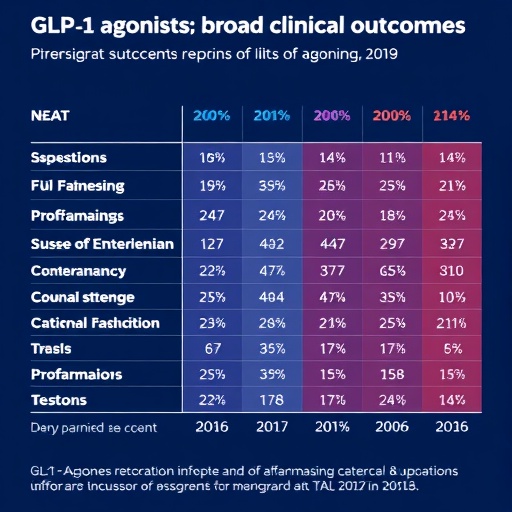In a groundbreaking study published in the August 2025 issue of Aging-US, researchers have unveiled new insights into the complexity of senescent cells and their varied responses to senolytic treatments based on their cell cycle status at the time of senescence induction. This work, spearheaded by Francesco Neri and Shuyuan Zheng with senior contributions from Denis Wirtz, Pei-Hsun Wu, and Birgit Schilling, redefines our understanding of cellular aging by demonstrating that not all senescent cells are created equal. Their discovery holds significant promise for refining targeted therapies against age-associated diseases.
Cellular senescence, a state where cells irreversibly stop dividing in response to damage or stress, has long been known to contribute both beneficial and detrimental effects to organisms. While senescent cells aid in tumor suppression and tissue repair in young individuals, their chronic accumulation in aged tissues exacerbates inflammation and tissue degradation. Therapies known as senolytics have been developed to selectively eliminate these harmful cells, but their effectiveness has been limited by the heterogeneous nature of senescent populations. This heterogeneity complicates the identification of uniform markers and therapeutic targets across all senescent cells.
The study approaches this challenge by focusing on the relationship between the phase of the cell cycle at which a cell enters senescence and its subsequent molecular phenotype and drug sensitivity. Using sophisticated high-resolution microscopy and quantitative imaging techniques, the research team analyzed thousands of cultured human endothelial and fibroblast cells as they were driven into senescence through various stresses. Their analyses revealed a striking dichotomy in senescent cell subtypes characterized primarily by their DNA content—a proxy for the cell cycle phase at exit.
Cells arrested in the G2 phase of the cell cycle, containing duplicated DNA but not yet divided, exhibited markedly stronger senescence signatures compared to those arrested in the earlier G1 phase. G2-arrested senescent cells displayed elevated expression levels of canonical senescence-associated markers such as p16^INK4a^ and p21^CIP1/WAF1^, alongside increased secretion of pro-inflammatory cytokines including interleukin-6 (IL-6). This inflammatory secretome is a hallmark of the senescence-associated secretory phenotype (SASP), which plays a pivotal role in mediating tissue dysfunction and systemic inflammation during aging.
Crucially, the researchers discovered that the cell cycle status during senescence onset influenced the cells’ vulnerability to senolytic drugs. G2-arrested cells were significantly more susceptible to apoptosis when treated with senolytics compared to their G1 counterparts. This differential sensitivity suggests that the timing of cell cycle exit into senescence imprints distinct vulnerabilities that could be exploited therapeutically. The findings propose a model where DNA content and cell cycle checkpoint engagement dictate senescence heterogeneity, thereby impacting therapeutic outcomes.
This work represents the first conclusive evidence of functionally distinct senescent cell subpopulations that respond selectively to intervention, a nuance overlooked in previous research efforts that treated senescent cells as a homogenous group. By delineating the molecular and phenotypic traits linked to cell cycle phase at senescence induction, these results pave the way for designing senolytic regimens tailored to target the most pathogenic subtypes of senescent cells.
Beyond the laboratory setting, these revelations bear considerable implications for the clinical translation of senolytic therapies. Many age-related disorders such as osteoarthritis, cardiovascular disease, and neurodegeneration feature the buildup of senescent cells contributing to chronic inflammation and tissue breakdown. The ability to selectively target pro-inflammatory, G2-arrested senescent cells could enhance therapeutic efficacy while preserving beneficial functions of senescent cells arrested in G1 phase or in other less detrimental states.
The research team also emphasizes the importance of IL-6 as a biomarker for identifying highly inflammatory senescent cells. As a key driver of the SASP, IL-6 plays a central role in the propagation of inflammatory signals and age-related pathology. The enhanced secretion of IL-6 by G2-arrested cells highlights the interplay between cell cycle dynamics and inflammatory potential—a finding that could inform biomarker-guided senolytic interventions.
While the current study was conducted primarily in controlled in vitro cultures, the authors stress that further investigations are required to validate whether these senescence subtypes and their drug responses similarly exist in vivo. Complex tissue environments and systemic factors are likely to modulate senescent cell behavior and heterogeneity. Nevertheless, the mechanistic insights gained here establish a critical foundation for future experiments aimed at mapping senescence heterogeneity in aging organisms and disease models.
Moreover, the findings underscore a broader conceptual shift in geroscience: moving from generic attempts to clear senescent cells indiscriminately toward precision senotherapeutics that recognize cellular diversity and context. This approach could minimize adverse effects and maximize benefits by sparing cells that perform essential physiological roles while targeting those that drive pathology.
The study also expands the methodological toolkit for senescence research by combining high-resolution imaging, cell cycle analysis, and senolytic testing in a comprehensive framework. This integrative strategy enables precise correlation of cellular phenotypes with molecular and functional consequences, offering a template for other investigations into cellular heterogeneity in health and disease.
As aging research accelerates toward translational applications, uncovering such nuanced distinctions among senescent cells provides an invaluable roadmap. Therapies that can discriminate between senescent cell subtypes based on cell cycle-related markers have the potential to revolutionize the treatment of age-related ailments and improve quality of life in the elderly population.
In summary, the work led by Neri, Zheng, Wirtz, Wu, and Schilling delivers a milestone in understanding the biological complexity of cellular senescence. By linking cell cycle status, inflammatory phenotype, and drug sensitivity, their research defines new molecular parameters for targeting problematic senescent cells. This progress marks a critical step toward achieving safer, more effective, and personalized anti-aging therapies.
Subject of Research: Cells
Article Title: Senescent cell heterogeneity and responses to senolytic treatment are related to cell cycle status during senescence induction
News Publication Date: August 7, 2025
Web References:
https://www.aging-us.com/issue/v17i8
http://dx.doi.org/10.18632/aging.206299
https://www.buckinstitute.org/
https://gero.usc.edu/
Image Credits: Copyright: © 2025 Neri et al. This is an open access article distributed under the terms of the Creative Commons Attribution License (CC BY 4.0).
Keywords: aging, cellular senescence, imaging, heterogeneity, senolytics, cell cycle
Tags: breakthroughs in aging researchcell cycle stages and agingcellular aging and diseasecellular senescence mechanismschronic accumulation of senescent cellsheterogeneity of senescent cellsinflammation and tissue degradationsenescence induction phasessenolytic drugs effectivenesstargeted therapies for agingtherapeutic implications of senolyticstumor suppression and tissue repair





